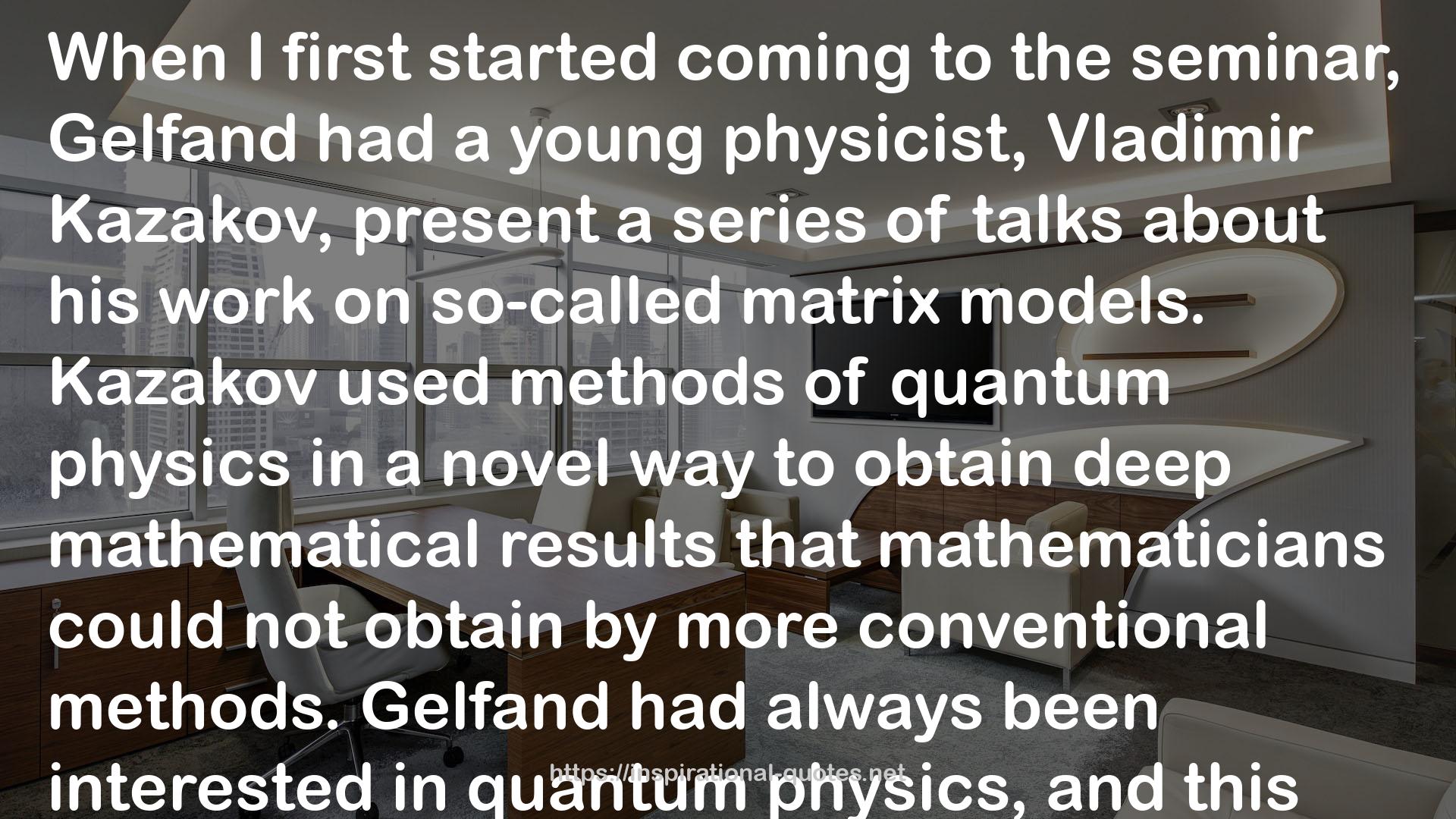" When I first started coming to the seminar, Gelfand had a young physicist, Vladimir Kazakov, present a series of talks about his work on so-called matrix models. Kazakov used methods of quantum physics in a novel way to obtain deep mathematical results that mathematicians could not obtain by more conventional methods. Gelfand had always been interested in quantum physics, and this topic had traditionally played a big role at his seminar. He was particularly impressed with Kazakov’s work and was actively promoting it among mathematicians. Like many of his foresights, this proved to be golden: a few years later this work became famous and fashionable, and it led to many important advances in both physics and math. In his lectures at the seminar, Kazakov was making an admirable effort to explain his ideas to mathematicians. Gelfand was more deferential to him than usual, allowing him to speak without interruptions longer than other speakers. While these lectures were going on, a new paper arrived, by John Harer and Don Zagier, in which they gave a beautiful solution to a very difficult combinatorial problem.6 Zagier has a reputation for solving seemingly intractable problems; he is also very quick. The word was that the solution of this problem took him six months, and he was very proud of that. At the next seminar, as Kazakov was continuing his presentation, Gelfand asked him to solve the Harer–Zagier problem using his work on the matrix models. Gelfand had sensed that Kazakov’s methods could be useful for solving this kind of problem, and he was right. Kazakov was unaware of the Harer–Zagier paper, and this was the first time he heard this question. Standing at the blackboard, he thought about it for a couple of minutes and immediately wrote down the Lagrangian of a quantum field theory that would lead to the answer using his methods. Everyone in the audience was stunned. "
― Edward Frenkel , Love and Math: The Heart of Hidden Reality
